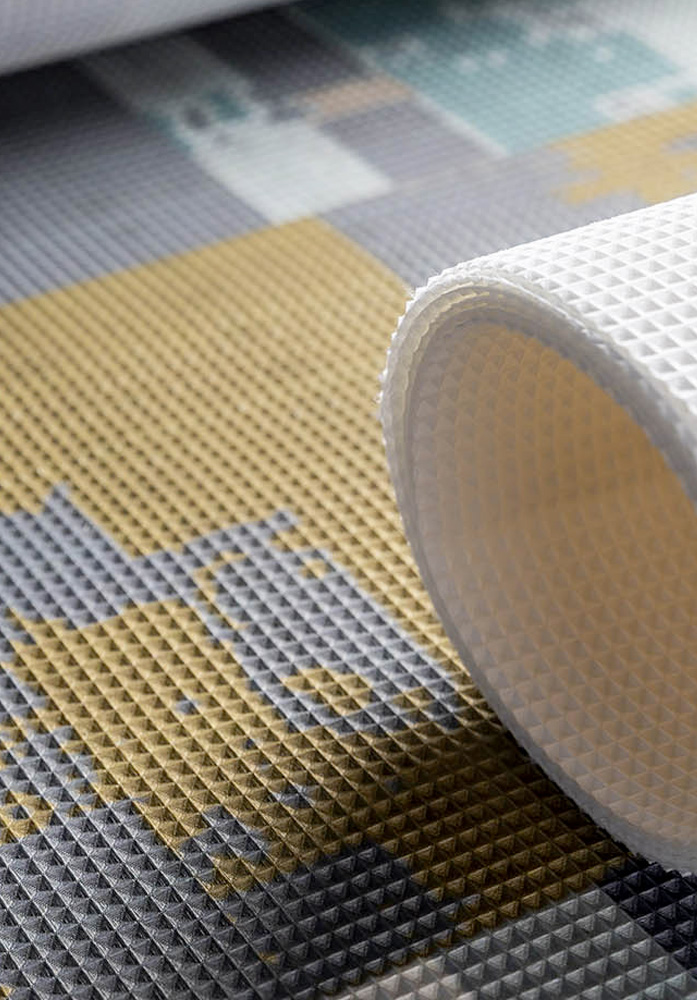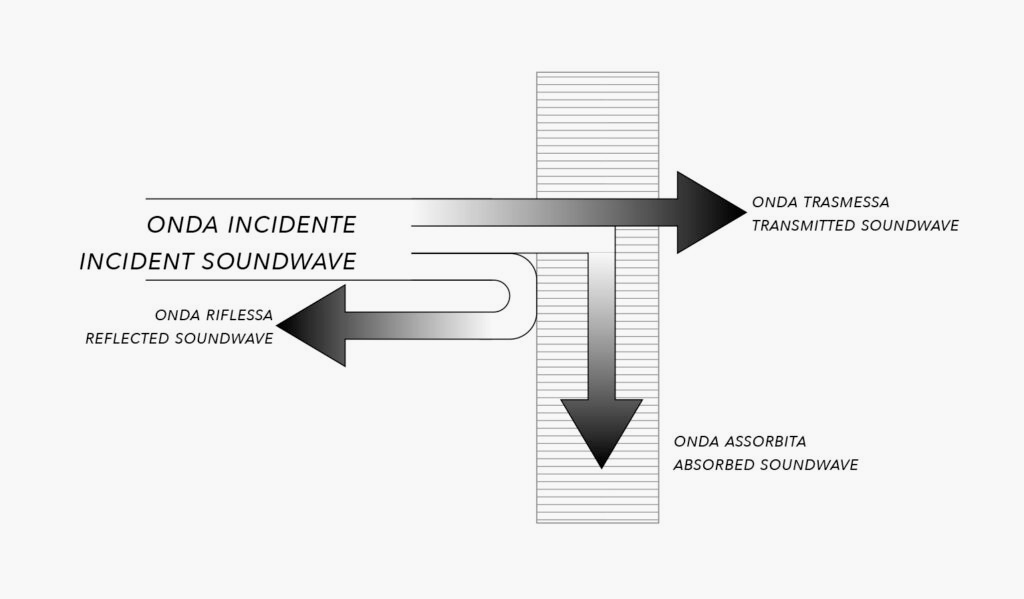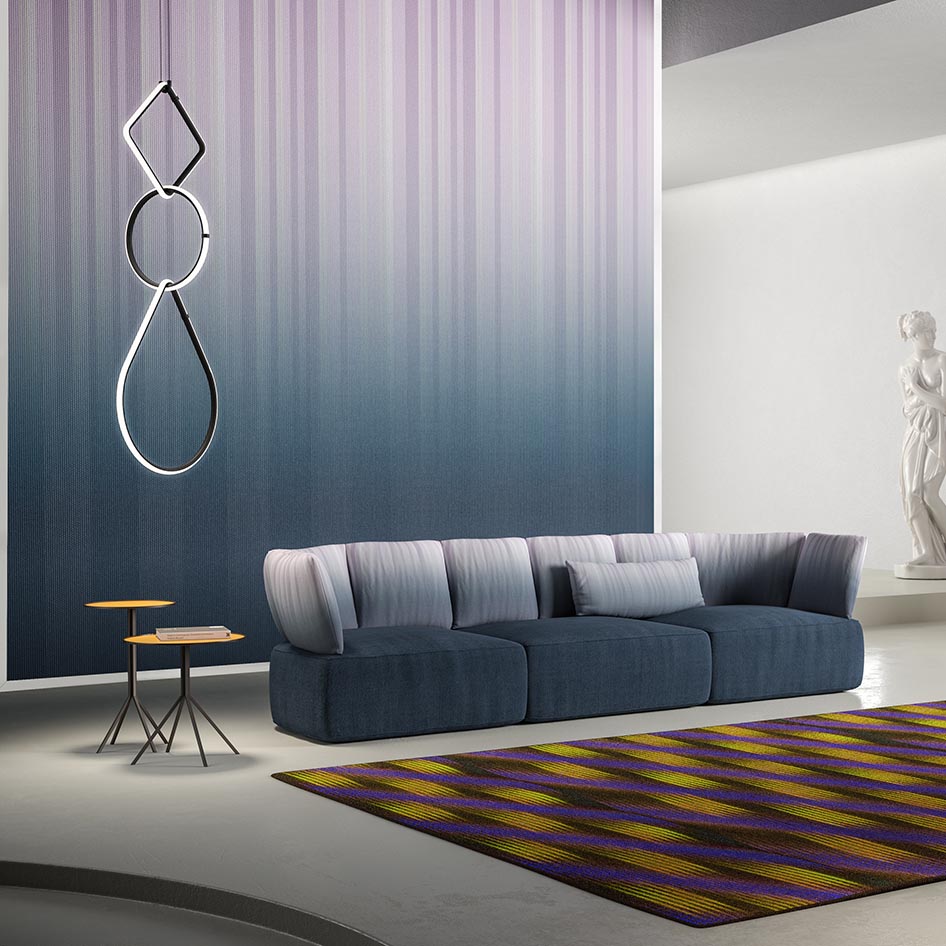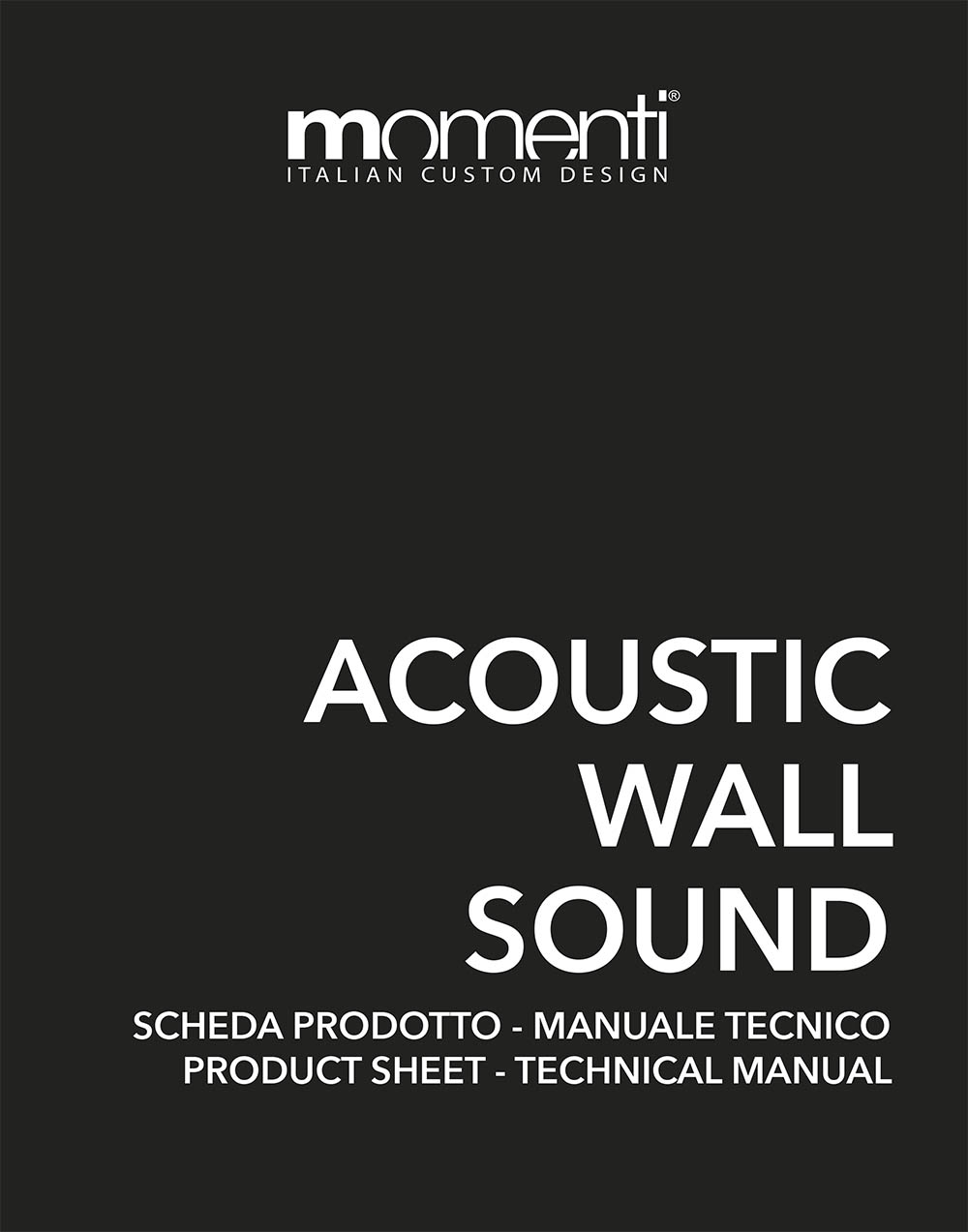Acoustic Wall Sound sound-absorbing panels for interiors
Acoustic Wall Sound is the series of sound-absorbing panels for interiors created by Momenti Home. This line is made by highly efficient sound-absorbing panels and sophisticated.
They are ideal for decorative interiors in a variety of environments: you can use them for private homes, hotels, restaurants, bars, offices and more.
These coatings are designed to optimize the acoustics of spaces, significantly reducing sound reverberation which, in the long run, could be annoying and harmful.
In addition to performing a practical function in absorbing unwanted sound waves, they add a refined aesthetic touch to environments, improving the overall sensory experience.
Their versatility makes them suitable for different contexts, ensuring acoustic comfort without compromising style. The collection embodies the commitment of Momenti in combining functionality and aesthetics, offering solutions that transform spaces into harmonious and acoustically comfortable environments.
Momenti it is beauty for acoustic well-being.
Acoustic Wall Sound winds along the perimeter of a space, outlining the rooms with sculptural elegance and impeccable architectural conception.
Its presence is an artistic statement that goes beyond simple functionality, decorating not only the surfaces but also the surrounding volumes and geometries, helping to shape new ones.
These sound-absorbing panels, applied to walls or displayed as framed and self-supporting double-sided elements, or even as full-height panels from floor to ceiling, serve as a welcoming haven for conversation.
Their ability to create intimacy and an enveloping atmosphere is surprising, while ensuring acoustic well-being of those who share the same space. Acoustic Wall Sound is not only a solution for sound control, but also an architectural element that transforms environments, adding an aesthetic and functional dimension.
This combination of form and function makes it an essential element for designing spaces. This confirms its central role in the art of shaping the acoustic and visual environment in a single expression of refined design.

Acoustic pollution and anti-reverberation sound-absorbing panels
In the past, the negative impact of noise pollution was often underestimated and was not even considered as an element capable of compromising overall well-being.
With law n. 447/1995, the fundamental principles for protection against the harmful effects of such pollution were introduced, recognizing its importance. In closed environments shared by numerous people, even the simple reverberation of sound, i.e. the reflection of sound waves on surfaces, can cause discomfort. It is in these situations that our anti-reverberation sound-absorbing panels come into play, effectively solving this type of problem.
Acoustic Wall Sound, with its combination of beauty and certified quality, presents itself as the ideal solution to respond to the need to reduce any interference phenomenon that can compromise the acoustics of a space.
These panels not only help improve the sound quality of a room, but also represent an aesthetic and functional element that combines perfectly the needs for comfort and design of shared environments.
Awareness of the importance of managing noise pollution has grown, and Acoustic Wall Sound presents itself as an effective and aesthetically refined response to this constantly evolving need.
Acoustics and sound absorption
Why choose Acoustic Wall Sound sound absorbing panels
Acoustic Wall Sound sound-absorbing panels for interiors are designed to minimize the excessive reverberation time of sound waves, thus promoting acoustic insulation in the surrounding environments.
The Acoustic Wall Sound system was specially designed to ensure optimal acoustic well-being. Thanks to the coverings and dividers made with anti-reverberation sound-absorbing materials, the living space is transformed into an authentic "ecosystem" characterized by comfort, emotion and uniqueness.
These panels effectively play a practical role in improving the sound quality within an environment. At the same time they are also able to integrate in aesthetic terms, helping to define the atmosphere and identity of the space.
Acoustic Wall Sound presents itself, therefore, as a key element for the creation of a living environment which goes beyond simple acoustic functionality. Our sound-absorbing panels promote a feeling of comfort and a unique emotional experience in any context you decide to install them.
Do you want to find out more?
To get more information contact us about this product, we will be happy to find the ideal solution together.
Sound absorption - additional information
What does sound absorption mean and how does it happen?
To explain how sound-absorbing coverings and partitions, it is important to understand what “sound absorption” means and how this physical phenomenon occurs. This is a relevant factor when considering the acoustics of an indoor environment. In fact, sound absorption makes it possible to reduce the reverberation of sound waves which causes a feeling of confusion in places where several people speak at the same time. It's a property of some materials, such as lead, rubber, resins, acrylics and fiberglass. It consists in the ability to absorb some of the sound waves, preventing them from being reflected and re-scattered in space.

The absorption coefficient alpha (α) allows you to compare the sound absorption performance of different materials. An alpha coefficient equal to 1 corresponds to the maximum sound absorption. For values tending to 0, the sound absorption decreases and the reflection of the sound wave increases.
Sound absorbing material for walls and partitions
A sound-absorbing material is characterized by intrinsic properties which transform a substantial part of the energy of the sound wave that strikes its surface into heat. It is thanks to this ability that i sound absorbing materials for walls and partitions they guarantee acoustic absorption, with reduction of the reverberation of sound waves. Indeed, the transformation of sound energy into heat prevents the reflection of the waves on the surfaces and their further diffusion in the habitable space.
How to increase sound absorption with the characteristics of the materials
How to increase sound absorption in a space where there is a lot of sound wave reverberation? The characteristics of sound-absorbing materials allow us to answer the question. These are the materials with which each is built sound absorbing panel, intended to cover walls and furniture, or to divide an environment. Let's see how the phenomenon of sound absorption occurs thanks to the conformation of the products.
The three ways of sound absorption of a sound-absorbing panel
Sound absorption occurs in different ways. They are distinguished:
- sound absorption for porosity;
- sound absorption for membrane resonance;
- and finally, sound absorption for cavity resonance.
Our sound absorbing panels for interiors exploit all three modes of absorption, including mixed systems.
The most common sound-absorbing materials are porous and the parameters that describe their effectiveness are:
- porosity – density;
- geometry – elasticity of the structure;
- mounting distance from the rear reflective surface.
The sound absorption coefficient
Porosity and density of the material, geometry and elasticity of the structure and distance of the panel from the rear reflecting surface influence the sound absorption coefficient. This is the most important parameter in the evaluation of sound absorbing materials.
All porous sound-absorbing materials let air pass inside the tiny cavities that characterize them. Thus, the waves remain "trapped" and are not reflected. That is, the transformation of their sound energy into heat takes place.
In short (Italian only)
Sound absorption is defined as the property of a material to absorb sound energy incident on its surface.
Acoustic reverberation and reverberation time
The use of sound-absorbing structures and materials is necessary in environments characterized by excessive acoustic reverb, that is, where echoes and reflected sound waves are annoying.
An essential factor for evaluating the acoustic well-being in a certain environment is the reverberation time.
The "reverberation time" is defined as a precise interval of time: that necessary for the sound level to decay by 60 dB, measured starting from the moment of interruption of the sound source.
In closed spaces where many people talk to each other, this measure is decisive for highlighting the functionality of the room for interpersonal communication.
Environments compromised by acoustic reverberation
Classrooms, canteens, restaurants, hotels and cafes often have highly reflective walls. If they are not lined with sound absorbing materials, the reverberation time is high. As a result, conversations are disturbed by sound waves reflected off surfaces. In environments where sound-absorbing systems are used, on the other hand, the reverberation time is reduced and the acoustic well-being is clearly greater.
A high reverberation time decreases the understanding of the speaker's words and increases the feeling of discomfort of people in an interior.

Where to use sound-absorbing and sound-insulating panels for interiors
In noisy places with high acoustic reverberation, it is important to intervene to obtain acoustic comfort. The goal is to ensure the well-being of those who live in those spaces.
It is possible to improve the acoustics of an environment with specific treatments to reduce sound interference.
We will use our own sound absorbing systems to control sound reflections and improve the quality of verbal communication.
In adjoining rooms, conversations overlap. People may feel discomfort because they hear the words of others or because others hear theirs. In these cases, acoustic comfort is achieved with a screen that blocks sound waves.
We will use soundproofing materials to limit the transmission of sound from one room to another and prevent confidential conversations from being heard in other rooms.
The harmony of an environment will be obtained through the composition of two elements: acoustic treatment and soundproofing adapted to the specific characteristics of an interior.
Because Acoustic Wall Sound is the ideal solution
- Acoustic Wall Sound offers design and decorative sound-absorbing panels.
Our sound-absorbing system is colorful and imaginative, as desired by those who ask for it. The surfaces of the panels can be finished with any pattern and any shade of the RAL color scale.
- The Acoustic Wall Sound system is sound absorbing.
Good sound absorption is a decisive quality for places and environments where people meet (restaurants, hotels, bars, pubs, conference rooms, offices and much more).
- Acoustic Wall Sound panels reach a maximum height of 295 cm, without joints and trims.
- The colors of the Acoustic Wall Sound surfaces remain unchanged over time.
Insights - acoustics and sound absorption

Improving the acoustics of a shop with sound absorbing panels
How can we improve the acoustics of a shop with relatively simple interventions?Is this a question for you who have a commercial activity where you exhibit clothing, furnishings, books or other objects that

Acoustic absorption of materials: what it is and how to increase it
The sound absorption of materials can be complex in work environments, commercial establishments or domestic spaces. In indoor environments where we spend our daily lives, sound waves shouldn't








